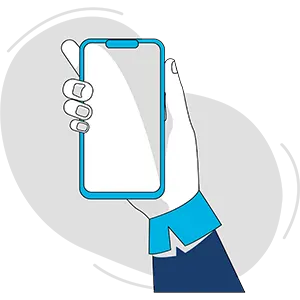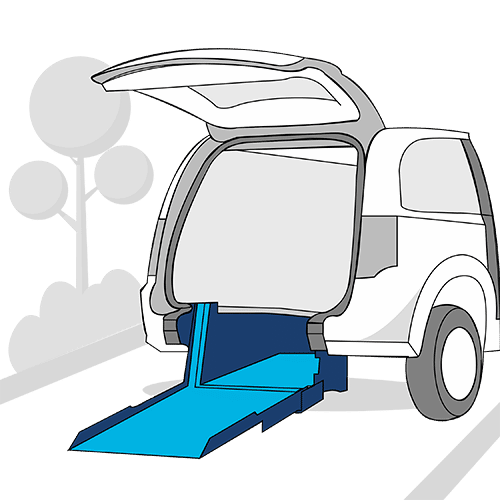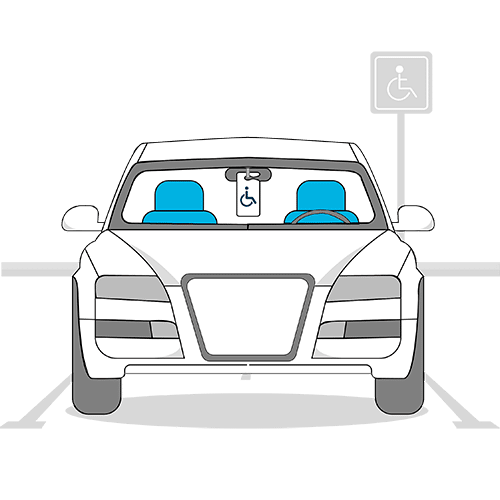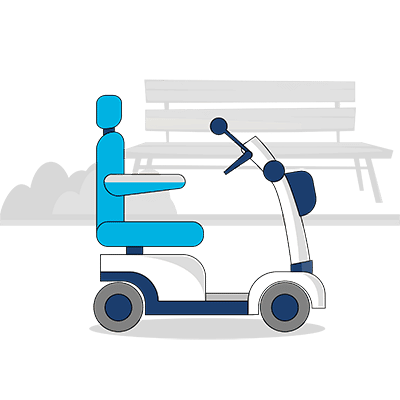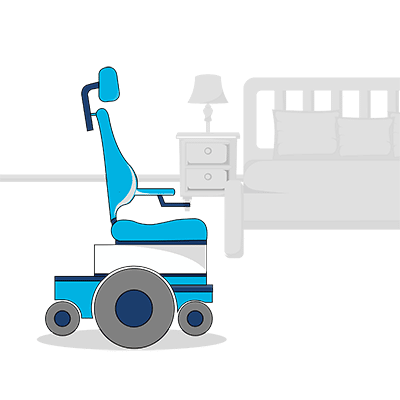Answering questions around how invisible disability affects mobility involves many, many pieces of information that we could never hope to explore in the one blog article. What we will do in this piece is touch on some key areas, in an effort to raise awareness of how invisible disabilities vary greatly and how Australians can help make life easier for people living with them.
The Government’s Public Service Commission defines disability as “a limitation, restriction or impairment [that] restricts everyday activities,” with this lasting or being likely to last for at least six months. Living with your everyday activities being restricted is challenging to say the least. Achieving essential tasks requires more time, effort and planning, and very often costly equipment like a wheelchair or mobility scooter.
However, many disabilities are not immediately apparent to untrained eyes – making them invisible disabilities.
There are hundreds of invisible disabilities which can affect the mind and body, and symptoms present in different ways for different people. In fact, the same disability can impact the same person differently on different days (or even during the same day). While we may not be able to see these symptoms, each invisible disability affects mobility in diverse ways and to varying degrees.
Cancer, heart conditions, anxiety disorders, Chronic Fatigue Syndrome, Cerebral Palsy, Asperger’s, Sensory Processing Disorder, Parkinson’s Disease, Fibromyalgia, Ehlers-Danlos Syndrome and Multiple Sclerosis are just some examples of invisible disability.
In this piece we focus on physical mobility-impairing invisible disabilities.
Who does invisible disability affect?
According to Wikipedia an estimated 1 in every 10 people live with an invisible disability. In Australia alone, nearly 3 million people have an invisible disability.
Invisible disabilities, sometimes called hidden disabilities, are often chronic (i.e. long term or permanent). A hidden disability forces you to plan every action around managing symptoms. And as a result, it can negatively affect your mobility, your mental health, your relationships with others and much more.
Yet despite this, the general public usually does not see your disability. To them, it is invisible.
Invisible disability discrimination
Anyone who does not live with disability should consider what they can do to be more aware of how invisible disabilities affect the body and/or the mind.
Why? Because that can have a positive effect on how they treat someone living with disability. Which can in turn have a positive effect on that person’s life.
Courtesies – parking where you are supposed to
Seemingly harmless actions like parking in a disability parking space when you are not permitted to do so can have a big impact. Accessible parking spaces exist for a very good reason. For someone with a disability (invisible or otherwise), parking is not about convenience – but rather about access.
A disability parking bay is large enough to allow movement into and out of a vehicle safely. It is closer to a building’s access points to minimise the effect of pain and/or exhaustion. If there is no accessible parking, someone with a disability often cannot just move onto the next parking bay. As a result, they may have to go home.
Imagine if you had one “good” day after two weeks of chronic pain, but ended up having to give up on meeting your friend for a coffee because someone illegally parked in an accessible space. A devastating blow.
Courtesies – trusting someone’s word
Another action which shows support is placing trust in other people’s word. No one is under obligation to talk about having a disability or to prove it.
Ignorance and mistrust often lead people to question those with an invisible disability and ask for proof. Rather, be observant of how someone feels. A more aware and sensitive approach can give you a better impression of another person’s needs.
Even better – simply don’t presume or place judgement. Ever. Wouldn’t the world be a better place for those with hidden disabilities if they didn’t encounter doubt on a regular basis? With car parking and well beyond…
If a friend told you she was hungry and in the mood for lunch, you would believe her. You would not tell her she is being untruthful because her hunger is not visible. This same principle should be applied to invisible disability. If a person tells you they have a disability, seeing it is not important.
How you react is important, because people with invisible disabilities often face discrimination. This can lead to people staying at home because they don’t want to risk facing judgement.
One of the main ways in which people discriminate is based on looks. But unless you are fully versed in all invisible disabilities, how can you know what to look for? Regardless, the signs may not be there – they may purely be internal to the person living with invisible disability.
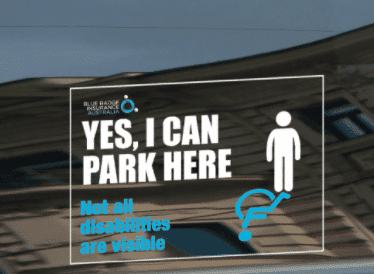
Living with chronic invisible disabilities
Chronic invisible disabilities are usually long-term or permanent, and throughout that time the person affected is constantly having to adapt. To differing levels of discomfort, pain, exhaustion and trauma each and every day. All of which can’t be anticipated.
This makes living with a chronic condition unpredictable and even risky. Daily tasks like shopping for food, attending appointments and interacting with others can be difficult. One day can be very different to the next.
Invisible disability affects mobility – physically and/or neurologically – and there are thousands of conditions.
We look at three of these physical invisible disabilities which people in Australia (and the world) face each day. Keen for a more substantial list? Although not exhaustive, this provides many more.
Multiple Sclerosis in Australia
When a person has Multiple Sclerosis (MS) the insulating covers of nerve cells in the brain and spinal cord are damaged. This affects the signals between the brain, spinal cord, and optic nerves.
Depending on how much nerve tissue is damaged, symptoms range from mild to severe. MS affects over 25,600 in Australia and more than two million worldwide and about three times as many women as men.
Symptoms of MS include:
- Visual disturbances – MS can cause a wide range of visual disturbances. Faded colour vision (especially with the colour red), blurring, blind spots, and partial blindness in one eye can all be painful. Double vision can cause a loss of balance. Involuntary eye movement can result in dizziness, nausea, and loss of balance.
- Fatigue – fatigue can take the form of heat and cold sensitivity, headaches and affect the ability to think, reason, concentrate, or remember.
- Motor control – issues include muscular spasms, weakness, lack of coordination or balance and lack of control of arms or legs.
Like all invisible disabilities, when you live with this you use enormous amounts of energy on overcoming your symptoms. Because MS can affect the movement of muscles, it can make it difficult to walk, wash, dress and do many other activities which are part of a daily routine.
This is why those of us without disabilities need to leave disabled priority seats and disability parking bays open. Why we need to be mindful of giving room to other people walking on the street, in shopping centres, etc etc. Why we need to be more accepting if someone you come into contact with in public seems cranky, pre-occupied or doesn’t want to talk, for example.
Living with Fibromyalgia
Fibromyalgia (FM) causes a range of symptoms and affects twice as many women as men. Research suggests the body may become extra sensitive in how it signals and processes pain in people with FM.
Symptoms of FM can include:
- Widespread pain – an attack causes pain that can last for three months or more and causes stiff muscles. Pain can range from dull to unbearable and can affect a person’s whole body. Pain can also be experienced as a sensitivity to noise, light, or temperature.
- Fatigue – FM causes extreme exhaustion that can affect you even after you have just woken up.
- Sleeping disorders – in addition to feeling extreme tiredness, FM can cause insomnia. Symptoms can also include restless legs syndrome and sleep apnoea causing a person to stop breathing temporarily.
- Allodynia – allodynia is a type of pain Fibromyalgia causes, that worsens with pressure. Much like the feeling created if you are sunburned and brush up against something.
Imagine the feeling of being permanently sunburned, and how it would feel if someone were to bump into you. The chances are you would become more hesitant to go out and more cautious when you do. This is just one of the ways that FM can make you feel.
Consider experiencing all these symptoms only to have someone challenge you when you park in the disabled parking bay. One way to tell if someone is living with an invisible disability is to look out for the yes I can park here, not all disabilities are invisible sticker from Blue Badge.
Using public transport with Ehlers-Danlos Syndrome
Melbourne mum Asher Wolf has a rare connective tissue disorder known as Ehlers-Danlos syndrome (EDS). It can cause loose joints, joint dislocation, stretchy velvety skin, abnormal scar formation and chronic pain.
Yahoo News shared her story about having an invisible disability and using public transport. As Asher says, “I’ve asked people to please not push me on the train and they’ve responded really aggressively.” She also shares, “I don’t want to have to explain my medical condition to a stranger every time I get on public transport.”
Think about all the places you come across others and then ponder how many might be dealing with the challenge of an invisible disability. All it can take is a little consideration to make someone’s day a lot easier.

Invisible disability in Australia
Each of us has experienced pain of some sort in our life. And very often pain makes a person also feel sad, frustrated or helpless. A time like this is exactly when you need to feel the support of those around you, something for each of us to remember!
Blue Badge shows support with discounts on comprehensive insurance products for Australians with a disability parking permit. We also have the Blue Badge Insurance Preferred Partner Network. This is a network of service providers who offer quality support to people living with a disability, and we provide discounts to their members.
How invisible disability affects mobility – over to you
The old saying “seeing is believing” means you need to see something before you can accept that it really exists. But so many things which we know are real are invisible, like air, gravity, temperature, trust and invisible disability.
Do you have a story about how invisible disability affects mobility? Feel free to message us via our Facebook group to share your thoughts.

